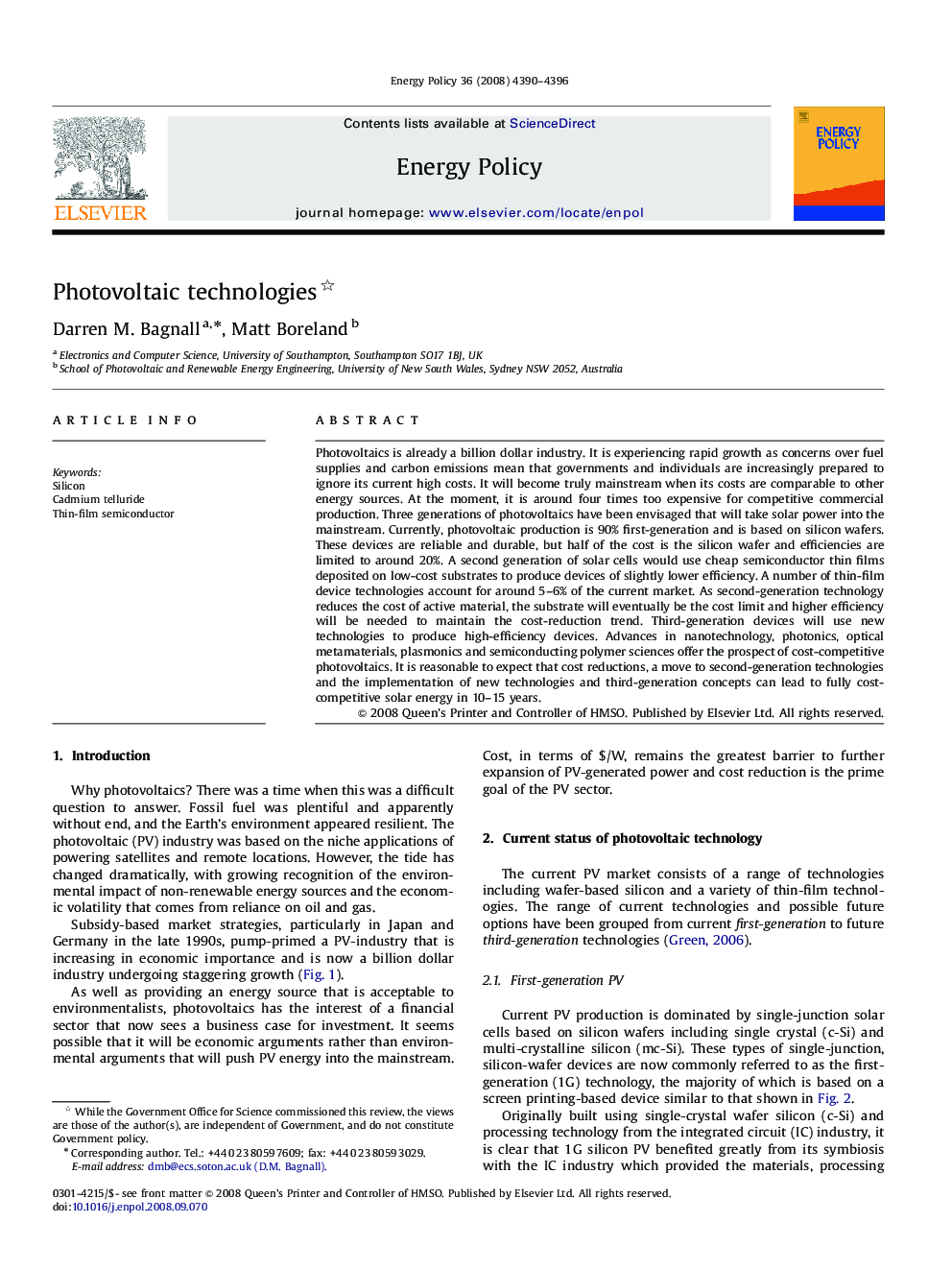| Article ID | Journal | Published Year | Pages | File Type |
|---|---|---|---|---|
| 993874 | Energy Policy | 2008 | 7 Pages |
Photovoltaics is already a billion dollar industry. It is experiencing rapid growth as concerns over fuel supplies and carbon emissions mean that governments and individuals are increasingly prepared to ignore its current high costs. It will become truly mainstream when its costs are comparable to other energy sources. At the moment, it is around four times too expensive for competitive commercial production. Three generations of photovoltaics have been envisaged that will take solar power into the mainstream. Currently, photovoltaic production is 90% first-generation and is based on silicon wafers. These devices are reliable and durable, but half of the cost is the silicon wafer and efficiencies are limited to around 20%. A second generation of solar cells would use cheap semiconductor thin films deposited on low-cost substrates to produce devices of slightly lower efficiency. A number of thin-film device technologies account for around 5–6% of the current market. As second-generation technology reduces the cost of active material, the substrate will eventually be the cost limit and higher efficiency will be needed to maintain the cost-reduction trend. Third-generation devices will use new technologies to produce high-efficiency devices. Advances in nanotechnology, photonics, optical metamaterials, plasmonics and semiconducting polymer sciences offer the prospect of cost-competitive photovoltaics. It is reasonable to expect that cost reductions, a move to second-generation technologies and the implementation of new technologies and third-generation concepts can lead to fully cost-competitive solar energy in 10–15 years.
